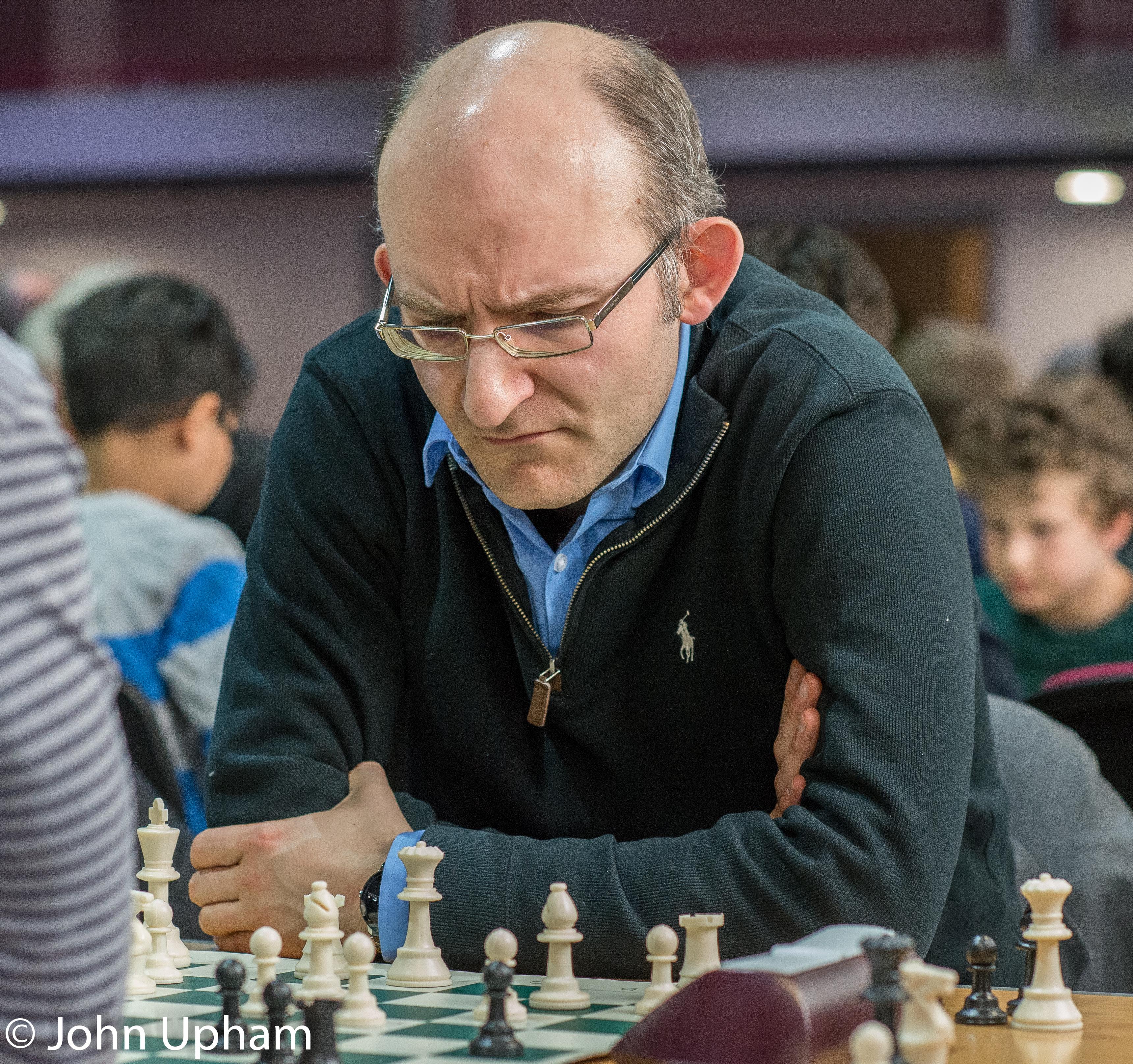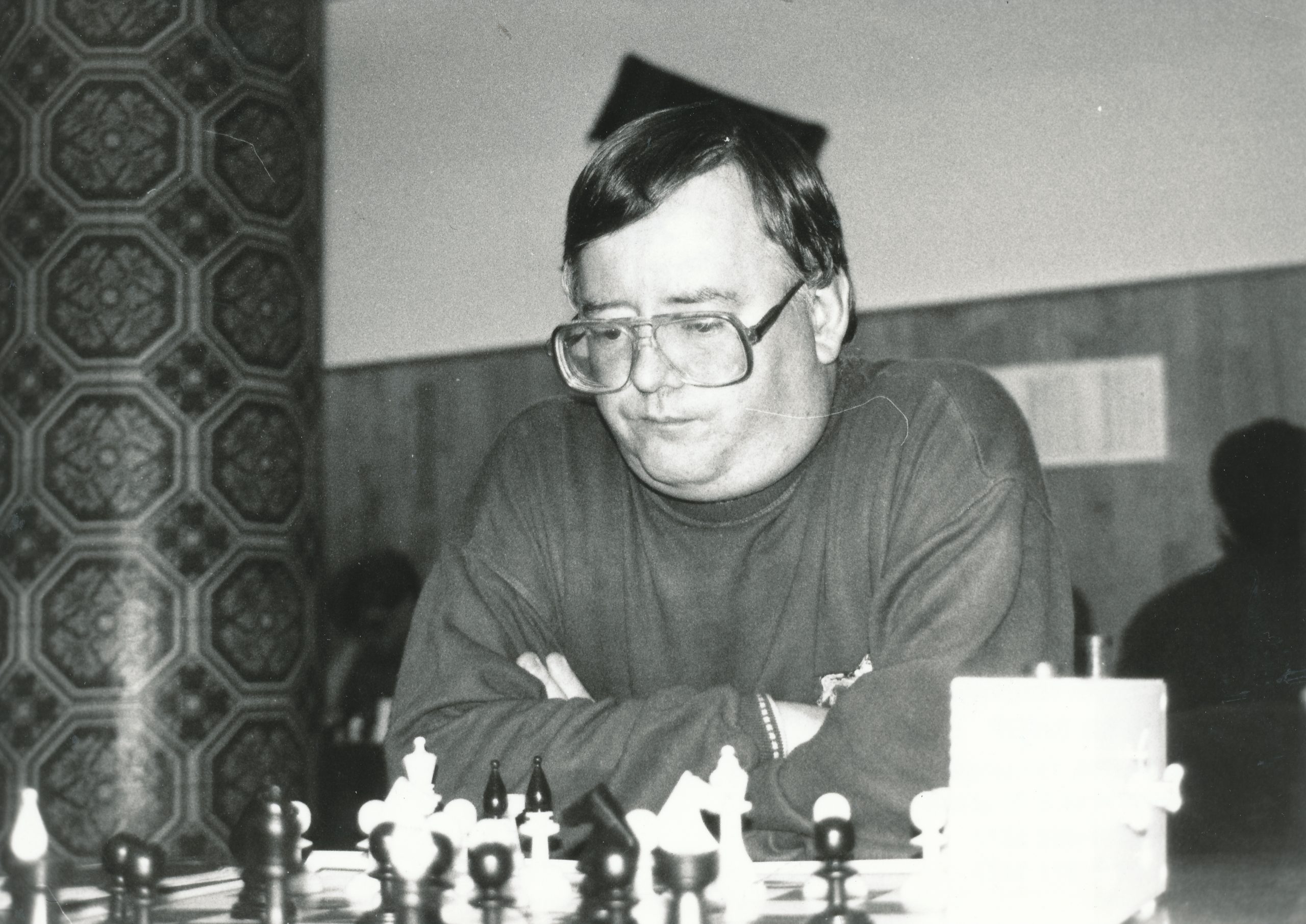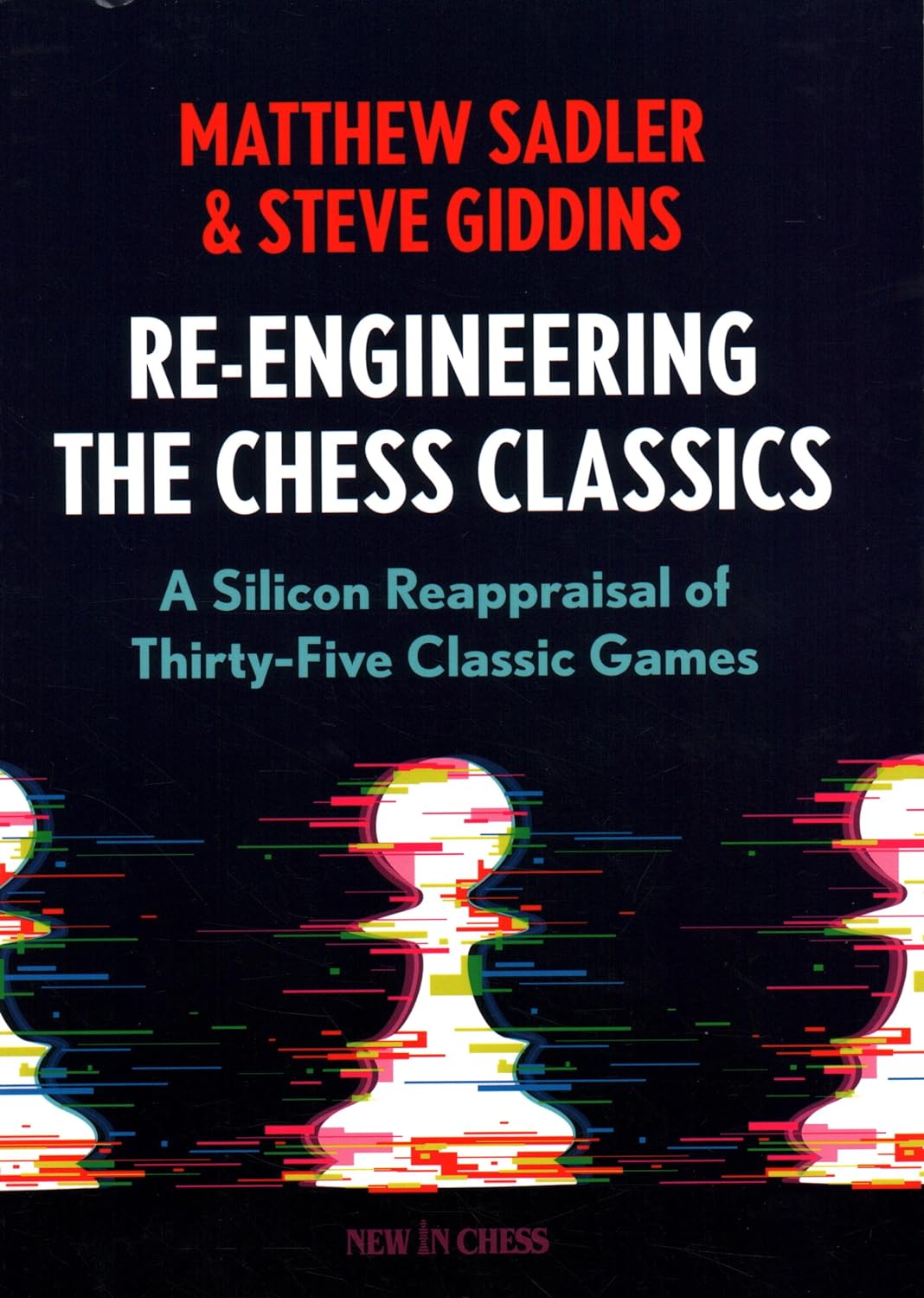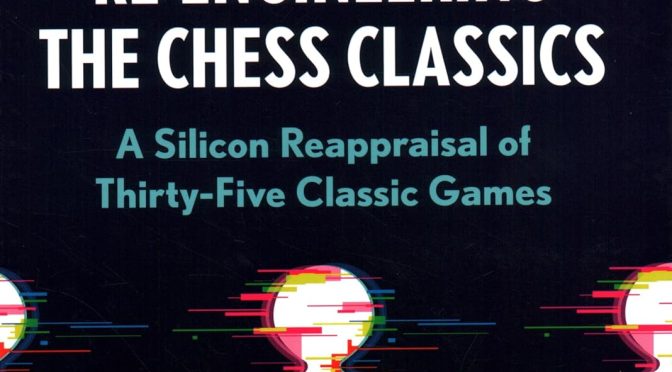From the publisher:
“Matthew Sadler is the world’s greatest expert in computer chess – and what it brings to us humans in new insights. In this book, the authors have unleashed the collective power of Leela, Komodo and Stockfish to look at 35 classic games played by fan favourites such as Boris Spassky, Mikhail Tal, Bent Larsen and Bobby Fischer. The authors have re-engineered a wonderful collection of classic games. Their findings illustrate the richness and beauty of chess. But they have also generated dozens of positional chess lessons that will help every club player and expert to improve their game.”
From the back cover:
“Are you ready for new strategic insights about thirty-five of the most fascinating and complex chess games ever played by World Champions and other top grandmasters? Grandmaster Matthew Sadler and renowned chess writer Steve Giddins take a fresh look at some classic games ranging from Anderssen-Dufresne, played in 1852, to Botvinnik-Bronstein (1951) and Geller-Euwe (1953). They unleashed the collective power of Leela, Komodo and Stockfish to help us humans understand what happened in games of fan favourites such as Boris Spassky, Mikhail Tal, Bent Larsen and Bobby Fischer.
“The first chess engines improved our appreciation of the classic games by pointing out the tactical mistakes in the original, contemporary game notes, But the expertise of Matthew Sadler is to uncover the positional course of a game with the help of the second generation of chess engines that emerged after 2018.
“This book will change your perception of these games’ strategic and technical patterns. You will, for example, learn to appreciate and understand a classic Capablanca endgame. And a classic Petrosian exchange sacrifice. And a winning, and then losing, king-hunt endgame between Spassky and Tal. You will see how Larsen already understood the strength of the h-pawn march far before AlphaZero’s revelation. The engines offer new strategic ideas and plans that human players have yet to consider. Even ‘the best even anti-King’s Indian player’, Viktor Korchnoi, would be amazed by the engine’s unique ideas about White’s breakthroughs on the queenside.
The most instructive games are often those which are more strategic and technical. Using modern engines, the authors have re-engineered a wonderful collection of classic games, generating dozens of positional chess lessons that will help every club player and expert improve their game.”
About the authors:
Matthew Sadler (1974) is a Grandmaster and a former British Champion. He has been writing the famous Sadler on Books column for New In Chess magazine for many years. With his co-author Natasha Regan, Sadler twice won the prestigious English Chess Federation Book of the Year Award. In 2016 for Chess for Life and in 2019 for their worldwide bestseller Game Changer: AlphaZero’s Groundbreaking Chess Strategies and the Promise of AI.

Steve Giddins is a FIDE Master from England, and a highly experienced chess writer and journalist. He compiled and edited The New In Chess Book of Chess Improvement, the bestselling anthology of master classes from New In Chess magazine.

What we have here is a collection of 35 games annotated in depth using the latest technology. In their introduction the authors mention 40 games, and Matthew, in his technical note, refers to Korchnoi – Van Wely (Game 34) as Game 39. It seems, then, that five games were removed at the last minute to save space and keep the cost of the book down.
The games all predate the modern computer age, dating from Anderssen – Dufresne (the Evergreen Game) in 1852 to Portisch – Chiburdanidze in 1998. All the World Champions up to Karpov with the exception of Smyslov are featured. It’s noticeable that five of the games feature at least one female player.
It’s a lovely (to use Matthew’s favourite word) collection as well. We have some wild tactical games as well as strategic and technical masterpieces, and many games with both elements. While some will be perhaps over-familiar there will be others you probably haven’t seen before.
What the authors have done is subjected their chosen games to extensive computer analysis, playing engine v engine matches (mostly involving versions of Stockfish, Leela and Komodo) from critical positions in an attempt to discover the objective truth about at what point the winner reached a decisive advantage. Some of these games have been included in the notes, indicated by a vertical line to the left of the column, so that you can easily skip them if you don’t want to play them through. You can see how this works by referring to the sample pages here.
One game that interested me was Znosko-Borovsky – Alekhine (Paris 1933).
Ever since the days of Capablanca, there has been a tendency to assume that a small advantage somehow automatically leads to a win, in the hands of a great technical master such as Capablanca or Karpov.
If you’re familiar (as you should be) with Alekhine’s best games collections, you may recall that in this position he formed a six-point plan which would by force lead to a winning position.
By this point Alekhine had completed his plan, reaching a position where his king is more active and his rook can infiltrate via the open a-file. Znosko-Borovsky erred here by playing 33. c4?, after which he was definitely losing, but the engine games where White remained passive with something like Be1 were all drawn.
Of course you have to factor in the human element as well. The position was easier for Black to play, and the black pieces were handled by a player of extraordinary ability, but one of the lessons you learn from this book is how many positions that appear bad can be defended successfully.
A game I really enjoyed was that between two future World Champions, Spassky and Tal, from the final round of the 1958 Soviet Championship. Spassky, playing white, had to win to guarantee qualification for the Interzonal later that year. A rook ending was reached in which both players promoted. Spassky started chasing Tal’s king round the board, but, tragically for him, blundered away first the win and then the draw, and found himself out of the world championship cycle. As you know, Tal went on to win first the Interzonal, and then the Candidates before taking the title off Botvinnik (the 6th game from this match also features here).
The analysis of the queen and rook ending provided by the authors here is some of the most extraordinary I’ve seen. If, like me, you find positions with major pieces on the board and both kings in danger extremely scary you’ll want to see this.
Here’s the complete game, without annotations. Click on any move to play it through.
The Korchnoi-Van Wely game mentioned above (Antwerp 1997) reached this typical Mar del Plata King’s Indian position.
Korchnoi played 17. a6, and suggested that, instead of the game continuation of bxa6, 17… b6 18. cxb6 cxb6 should have been played.
The engines disagree, thinking that White is a lot better in that variation, and continuing 19. Nb4, Nc6, Na4, with Nxa7 and Nxb6 to follow.
“So many things about this game were new, unexpected and instructive for me, and so many things are now memorable for me too”, says Matthew in his technical note.
It’s a fascinating book, I think you’ll appreciate, which will be of interest to most chess players. Stronger players in particular will find a lot to learn from the games demonstrated here as well. The names of the authors, along with that of the publisher, are a guarantee of excellence, and the production is up to their customary high standards.
If, like one prominent UK chess book reviewer, you think pre-computer games should be left as they are rather than taken apart like this, you should perhaps turn away. I’m also not sure how many readers will actually play through the engine v engine games. I certainly haven’t done so, and, from a purely personal perspective, would have preferred rather fewer of them in the book, with perhaps a download available so that I could play through them on my computer at my leisure. This might have made room for the mysteriously missing five games.
I do have one other problem, which probably won’t matter to you, but does to me, but the authors fail the Yates test. His first name was plain Fred, not Frederick as given in the book.
The short final chapter sums up what you can learn from the engines:
1. Avoid passive pieces!
2. Grab space!
3. Use your rook’s pawns!
4. Small advantages don’t always win!
5. Use the whole board!
6. Be an absolute tactical genius, who never misses anything!!
Read this book, learn these lessons, and perhaps you too will be able to play as well as Stockfish!
Highly recommended if you like the concept of the book (I’d suggest you look at the sample page first). I’d be more than happy to see a second volume.
Richard James, Twickenham 2nd May 2024

Book Details:
- Paperback: 440 pages
- Publisher: New In Chess (31 May 2023)
- Language: English
- ISBN-10:9083311260
- ISBN-13:978-9083311265
- Product Dimensions: 17.12 x 2.64 x 22.83 cm
Official web site of New in Chess.


